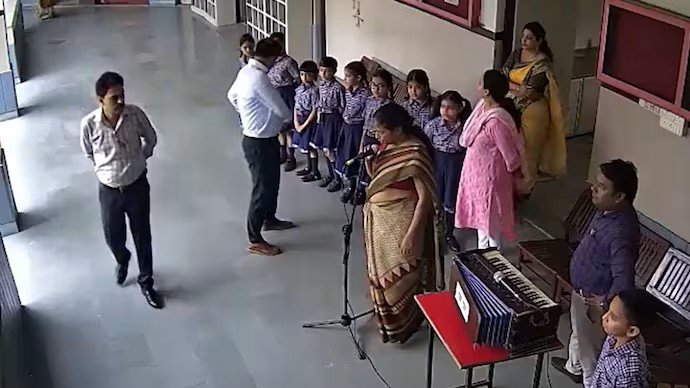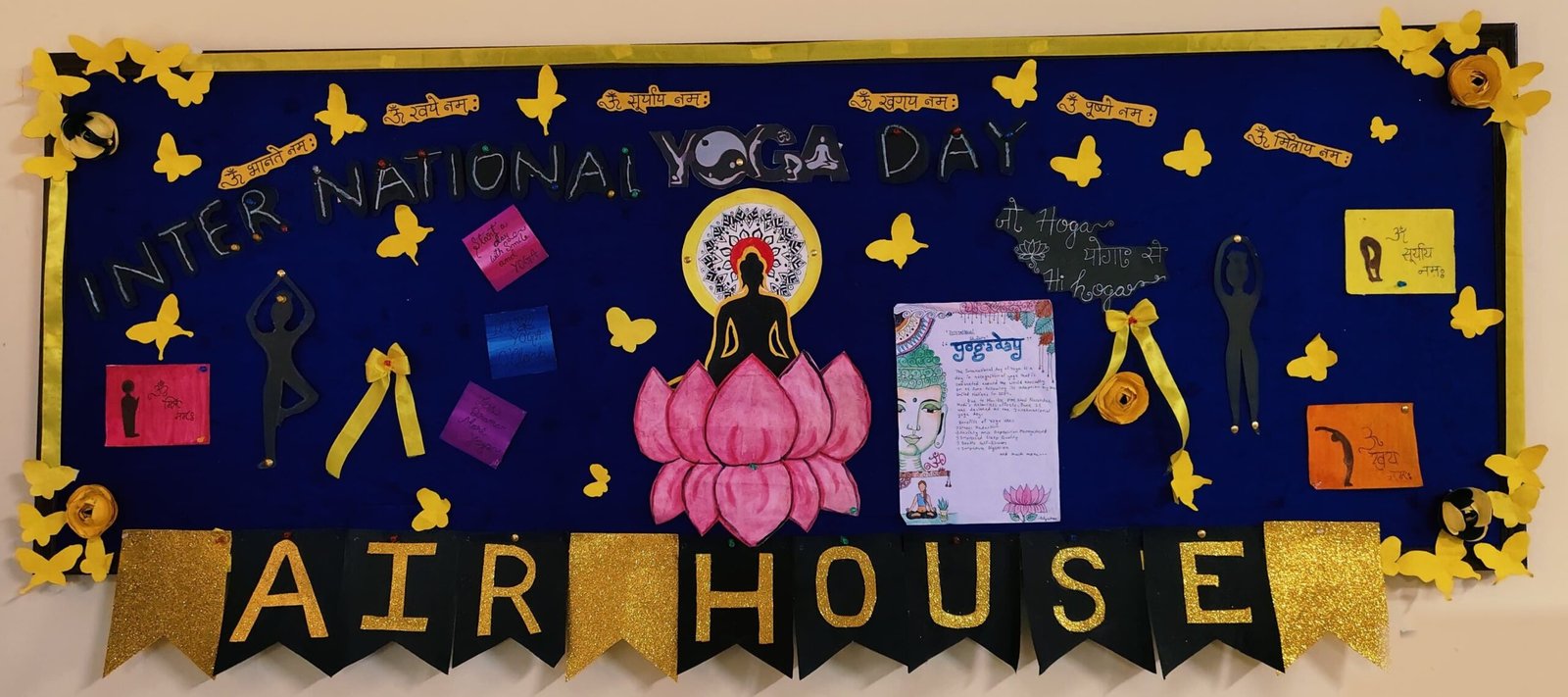Kota School Faces Backlash Over Viral Video of Hindu Students Reciting Islamic Verse
📰 Kota School Faces Backlash Over Viral Video of Hindu Students Reciting Islamic Verse
A viral video showing Hindu students at Bakhshi Springdales School in Kota reciting the Kalma, an Islamic declaration of faith, during a morning assembly has sparked intense backlash across Rajasthan and beyond. The incident has triggered sharp reactions from various social organisations, launched an official government investigation, and ignited a nationwide debate on religious expression in Indian schools.
📹 The Viral Video and Its Fallout
The video, which surfaced on social media earlier this week, shows a group of students—predominantly Hindu—reciting the Kalma in unison during a school prayer session. Outraged viewers quickly identified the school, and prominent social organisations, including the Vishwa Hindu Parishad (VHP) and Bajrang Dal, condemned the act as “religious coercion” and issued warnings of statewide protests unless action was taken against the school administration.
“This viral video is not inclusion. This is coercion,” stated a local VHP representative.
“You cannot force Hindu children to recite a verse that is a core part of Islamic doctrine. It crosses all constitutional and moral boundaries.”
🏫 School’s Defence for viral video: An Interfaith Prayer Tradition
In response, Vineet Bakshi, Director of the school and a retired naval officer, clarified that the school follows a Sarva Dharma Prarthana (All-Faith Prayer) tradition that has been in place for over 30 years.
“We believe in the unity of all religions. Our students are exposed to prayers from various faiths—Hindu, Muslim, Christian, Sikh—to promote harmony and mutual respect,” Bakshi explained.
He further added that the viral video was not from a recent assembly but from a past annual function, taken out of context and weaponised for communal outrage.
🕵️ Investigation and Official Response
The District Education Officer (DEO), Krishna Kumar Sharma, confirmed that an inquiry committee has been established. Headed by the Chief Block Education Officer, the committee has visited the school, reviewed viral video footage, and interviewed staff and students.
“After a thorough inquiry, necessary action will be taken in line with departmental guidelines,” Sharma stated.
As the school is CBSE-affiliated, the report will also be submitted to the Central Board of Secondary Education for further review.
🔥 Public Reaction and Polarisation
Despite the school’s explanation, the viral video incident has become a flashpoint in the ongoing debate over secularism in education. On one side are those who believe such interfaith initiatives promote harmony and inclusivity. On the other hand, critics argue that this practice could blur religious boundaries and alienate students from their own cultural identities.
Social media has amplified the tension, with hashtags like #ViralVideo, #KotaSchoolControversy, and #ReligiousIndoctrination trending nationwide.
📚 Broader Implications for Indian Education
This controversy is not just about a single video—it speaks to the complex relationship between education, faith, and national identity. As India continues to grapple with questions of religious tolerance and constitutional secularism, educational institutions are being increasingly scrutinised for how they approach interfaith content and expression.
🧭 The Big Question: Is Secularism One-Sided?
The viral video incident at Bakhshi Springdales School in Kota has not only reignited a debate on the role of religion in education but also raised a pressing question that many from the Hindu community are now asking openly:
Would the same act be tolerated if the roles were reversed?
What if Muslim students were asked to recite the Gayatri Mantra, or participate in rituals drawn from Hindu traditions during a school assembly? Would the reaction be equally calm and accepting? Or would it spark outrage, FIRs, political mobilisation, and calls for systemic reform?
🕉️ The Asymmetry of Tolerance
This perceived one-sided application of secularism, where Hindus are expected to embody tolerance, flexibility, and interfaith goodwill—often at the cost of compromising their religious sanctity—has led many to question the current secular framework.
“Why is it always a Hindu child who has to bear the burden of religious harmony?” asked a parent from Kota.
“Why should only one side be expected to adjust, compromise, and participate in symbolic gestures in the name of unity?”
This sentiment resonates deeply with a growing section of society that feels India’s secularism has often placed a disproportionate moral responsibility on the Hindu community—to accommodate, to absorb, and to exemplify religious harmony, even when other communities do not reciprocate with equal openness.
🔄 A Hypothetical Reversal
Imagine a school where a Muslim or Christian student is required to chant:
- “Om Bhur Bhuvah Swaha…” (the Gayatri Mantra),
- Sing “Jai Jagat Guru Sanatan Dharm” as part of the prayer, or
- Participate in aarti or bhajan sessions in Sanskrit.
In such cases, there would almost certainly be immediate legal and political consequences, possibly even intervention from minority commissions, NGOs, and civil rights advocates. The school could face accusations of religious infringement or coercion, with headlines condemning the “saffronisation” of education.
So then the question becomes:
Why is the inverse—Hindu students reciting Islamic prayers—tolerated and even defended under the label of “inclusive education”?
🧠 The Dangers of Performative Secularism
The Kota school viral video controversy has thus laid bare a larger issue: the performative and selectively applied secularism in India’s educational institutions. It highlights a pattern where “Sarva Dharma Samabhavana” (equal respect for all religions) often becomes “Hindu Dharma Self-Abnegation”—a one-way street paved with idealism, but riddled with hypocrisy.
While the idea of interfaith harmony is noble and should ideally be reciprocal, the onus must not fall solely on one community to uphold it. True secularism must be equitable, not theatrical or symbolic at the cost of one community’s dignity or beliefs.
🔍 A Call for Honest Dialogue
India must ask itself:
- Are our schools promoting real inclusion or symbolic tokenism?
- Is secularism about equal respect, or avoiding confrontation with select religious groups?
- And most importantly, can a child be forced into religious performance for the sake of optics, without it being labelled indoctrination?
Until these questions are debated honestly—without political fear or religious appeasement—the idea of secularism will continue to be weaponised and misapplied.
🧭 Conclusion: Beyond Kota
The Kota episode is no longer about one school or one viral video—it’s a mirror held up to India’s social conscience. It’s about re-evaluating what secularism means in the classrooms of a nation as spiritually diverse as ours.
If interfaith respect is the goal, it must be mutual, voluntary, and equally applied. Anything less is not harmony—it’s hierarchy in disguise.
As the investigation unfolds, the case of Bakhshi Springdales School may serve as a litmus test for India’s evolving secular education framework.
Viral video, Kota school controversy, Hindu students Kalma, religious prayer in schools, viral school video Rajasthan, education and secularism India
Recent Posts
- Trent Share Price Analysis 2025: Is the Tata Retail Giant Losing Its Shine?
- Paras Defence Share Price Analysis: Can This Defence-Tech Stock Soar Again or Is It Time to Book Profits?
- CUET UG Result 2025 Out Today | How to Download Scorecard from cuet.nta.nic.in
Discover more from
Subscribe to get the latest posts sent to your email.








2 COMMENTS